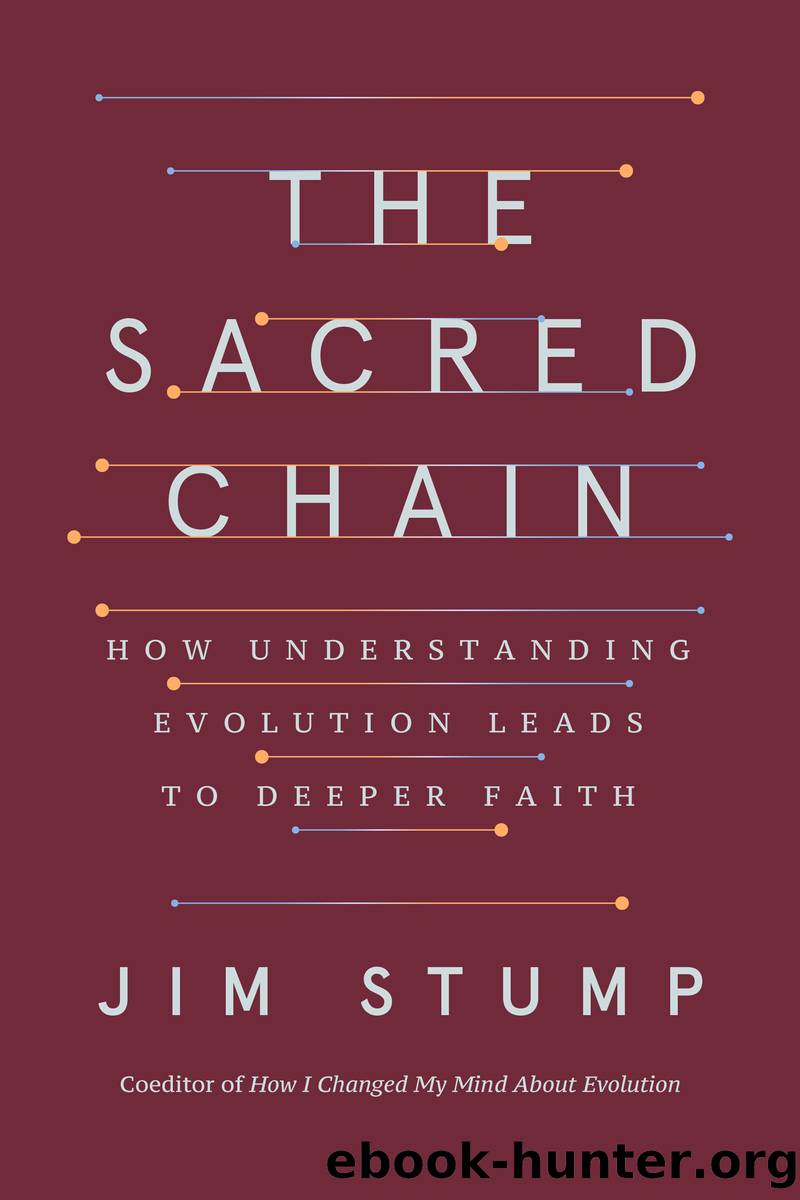The Sacred Chain by Jim Stump

Author:Jim Stump
Language: eng
Format: epub
Publisher: HarperCollins
Published: 2024-02-24T00:00:00+00:00
There are at least 255 figures drawn in the cave, most of them mammoths, which hardly appear in other ancient cave art. These are not random scratches on the wall, but gracefully drawn figures incorporating the contours of the cave wall. They were planned out with intention and executed with skill. The difference between them and what the hibernating bears left behind is shockingly obvious.
The dating is tricky, but the best estimates are that the mammoths of Rouffignac were drawn around 13,000 years ago. It was really remarkable to stand there in the space where our ancestors stood so long ago. They traversed the kilometer down into the cave without an electric tram, through narrow passages lit only by a torch that burned reindeer fat. That couldnât have been easy and made the difficulties I went through to get there seem trivial. Why did they do this? Why had I done this? To create art. To see art. There was no survival advantage conferred by clambering deep into a cave to draw. In fact, it was probably pretty risky. But wow, did it leave an impression. They were like us.
Hoping that my fortunes were changing and that the trip was worth all the hassle, I decided to drive another thirty minutes to the much more famous cave painting site of Lascaux. There the original is closed to the public, but a series of replicas has been built. Lascaux IV is an almost perfect reproduction of the original cave. I took a tour (in English!) that guided us through the cave and its amazing artistic portrayals of animals. From the monochromatic line drawings of Rouffignac, Lascaux is like stepping into technicolor. And even though this was a replica, it wasnât hard at all to believe I had stepped into a prehistoric world and seen the humanity of the artists.
Seeing these sites, I couldnât help but agree with Chesterton: âSomething of division and disproportion has appeared; and it is unique.â These people were us. Itâs a small world after all.
* * *
But Darwin wasnât entirely wrong about the nature of humans with respect to other animals. He was surely right about the fact that we share common ancestors with the other life-forms on Earth. Chesterton almost gives you the feeling that he thinks something magical happened to give those ancient humans the abilities they had. Darwinâs pointâand what his successors have plausibly shownâis that those abilities really can be achieved by a series of adaptations.
The tricky and often misunderstood part of the claim that we differ in kind from other species is that the capacities that so clearly set us apart (art, language, morality, culture, and so on) didnât spring from nowhere. They are dependent on other components of behavior and on our brain structures, and those things do have evolutionary stories and did develop by degrees. So we can find hints or precursors of our distinctive abilities in other species, and the answer to the question of whether we differ in kind or only by degrees seems to be .
Download
This site does not store any files on its server. We only index and link to content provided by other sites. Please contact the content providers to delete copyright contents if any and email us, we'll remove relevant links or contents immediately.
The Lost Art of Listening by Michael P. Nichols(7456)
Why I Am Not A Calvinist by Dr. Peter S. Ruckman(4125)
The Rosicrucians by Christopher McIntosh(3493)
Wicca: a guide for the solitary practitioner by Scott Cunningham(3149)
Signature in the Cell: DNA and the Evidence for Intelligent Design by Stephen C. Meyer(3103)
Real Sex by Lauren F. Winner(2988)
The Holy Spirit by Billy Graham(2917)
To Light a Sacred Flame by Silver RavenWolf(2791)
The End of Faith by Sam Harris(2709)
The Gnostic Gospels by Pagels Elaine(2499)
Waking Up by Sam Harris(2427)
Nine Parts of Desire by Geraldine Brooks(2345)
Jesus by Paul Johnson(2331)
Devil, The by Almond Philip C(2305)
The God delusion by Richard Dawkins(2284)
Heavens on Earth by Michael Shermer(2259)
Kundalini by Gopi Krishna(2151)
Chosen by God by R. C. Sproul(2143)
The Nature of Consciousness by Rupert Spira(2070)
